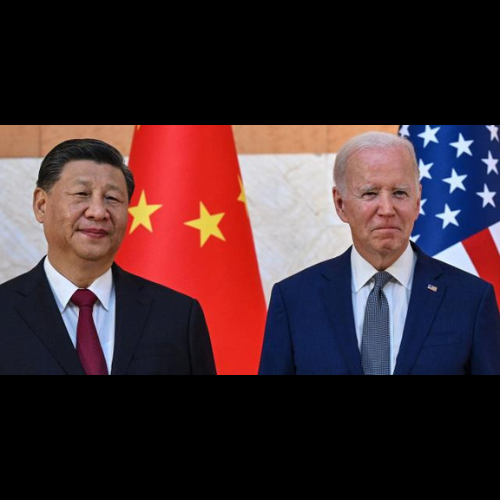In the context of a rapidly evolving global economic tapestry, China’s economic maneuverings — encompassing a robust stimulus package and reduced regulations — are designed to rejuvenate its domestic landscape. While these measures largely focus on internal stability and growth, the implications for the U.S., particularly surrounding inflation and market trajectories, are profound. Complicating this economic narrative is the broader geopolitical backdrop, where Xi Jinping, at the helm of China’s leadership, confronts multifaceted challenges both domestically and internationally.
Xi Jinping’s Political and Economic Waters
Initiating his groundbreaking third term in March, President Xi Jinping pledged to steer China through what he termed a “turbulent decade.” Having received unwavering support from China’s national legislature post the abolition of the presidential term limit, he projected confidence in China’s ability to weather imminent storms. Yet, several months later, China navigates even murkier waters.
Internationally, China finds itself locked in a multi-faceted rivalry with the U.S., spanning trade, technology, and security dimensions. This intense rivalry has precipitated calls from other global economies to “de-risk” their supply chains, jeopardizing China’s aspirations of establishing itself as a dominant global exporter and technological powerhouse.
Domestically, the situation is arguably more pressing. China’s economy wrestles with a sluggish recovery trajectory, with structural issues becoming increasingly prominent. This period emerges as potentially defining for Xi, frequently dubbed as China’s “helmsman.” As Professor Yeling Tan of the University of Oregon astutely notes, “Xi is facing challenges on multiple fronts, and they are interconnected.”
U.S. Implications amidst China’s Challenges
Positive Implications:
Increased Demand for U.S. Goods: A Chinese economic resurgence could boost its appetite for imported goods, including those from the U.S., aiding American businesses and potentially tempering inflationary tendencies.
Supply Chain Stability: China’s role in global supply chains is pivotal. An economically stable China ensures supply chain predictability, potentially suppressing some U.S. inflationary pressures.
Uplift for U.S. Multinationals: Numerous U.S.-based multinational corporations have sizable stakes in China. An invigorated Chinese economy could amplify their profitability, inducing positive trends in U.S. stock markets.
Potential Concerns:
Commodities Pricing: China’s revived economic activities might escalate global commodities demand. If this demand surpasses supply, the ensuing rise in global commodity prices could induce cost-push inflation in the U.S.
Capital Redirection: A promising Chinese economy might attract global investors eyeing higher returns. This could lead to capital outflows from U.S. markets, destabilizing them.
Currency Dynamics: A resurgent China might result in Yuan appreciation against the dollar. While this could make U.S. exports more competitive, it could simultaneously elevate import costs from China, intensifying U.S. inflationary pressures.
Heightened Competition: Beijing’s deregulation might magnify China’s appeal to global businesses, amplifying competition for U.S. entities.
Conclusion
As China grapples with an array of challenges under Xi Jinping’s leadership, its economic strategies possess far-reaching implications for the U.S. While potential benefits exist in the form of augmented demand for American goods and enhanced stability in global supply chains, challenges such as escalating commodity prices and potential capital outflows remain.
The interplay between Xi’s domestic leadership challenges and his international posturing vis-à-vis the U.S. further complicates this dynamic. An understanding of this intricate landscape becomes essential for policymakers and investors alike, prompting a need to adapt strategies to maximize opportunities and navigate impending challenges in this East-West economic nexus.
Disclaimer: This article is intended for informational purposes only. It should not be considered financial or investment advice. Always consult with a certified financial professional before making any significant financial decisions.





